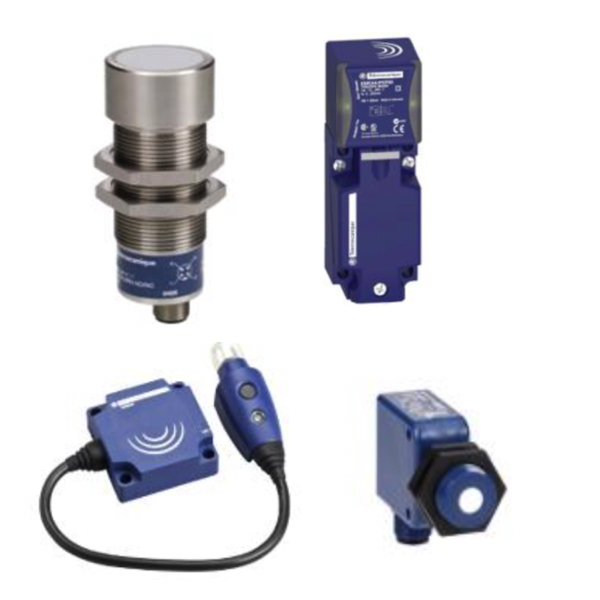Proximity Sensors

Proximity sensors are non-contact devices designed to sense objects that are within a defined range, triggering an electrical signal without requiring the object to make physical contact. These sensors are used in industrial automation to detect nearby objects, control machine operations, and ensure safety. They are also used in consumer products, robotics, and various applications where reliable, contactless switching is needed. Inductive proximity sensors are one of the most widely used types. They are good for detecting metallic objects and work by generating and monitoring an electromagnetic field.
Inductive proximity sensors are lauded for their strength, fast reaction time, and durability even in harsh or contaminated environments. The inductive proximity sensor creates an electromagnetic field at the sensing surface. When the metal target moves into the sensing range, it causes a disturbance in the field. Inductive sensors are ideal for detecting metals—that is, ferrous and nonferrous targets—without physical contact. Capacitive sensors can do what inductive sensors do, but they can also monitor a much broader range of materials. They can detect not only metals but also liquids and powders—anything that disturbs the electric field the sensor creates at the surface.
More Information about Proximity Sensors
When compared to other sensors, such as photoelectric sensors, proximity sensors are much less affected by ambient light, and they are much more stable in environments where things may not be very clean or where things may be a little bit wet. That may be because photoelectric sensors rely totally on reflected light, but proximity sensors—especially inductive types—rely on the electromagnetic interaction with the target material, so much so that they may not work well with some materials but might work great with many others, and might work great in some environments but not in others. However, when it comes to problems in automation where a sensor needs to detect whether an object is nearby or not, proximity sensors may offer an ideal solution.
FAQs
Do magnetic sensors and photoelectric sensors use an electrical signal when transmitting information about nearby objects or target objects?
Yes, both magnetic sensors and photoelectric sensors use an electrical signal to transmit information about nearby or target objects, converting physical changes like magnetic fields or light interruptions into data for processing.
What is the detection range of proximity sensors that detect metallic and nonmetallic objects?
The detection range of proximity sensors that detect metallic and nonmetallic objects, such as capacitive sensors, typically ranges from 1 mm to 50 mm depending on the sensor size, material properties, and environmental conditions.
Limit Switch Basics
What are limit switches?
Limit switches are electromechanical switches that operate based on the movement or presence of an object. They are designed to detect the presence of an object using an actuator connected to a series of contacts to detect the presence and proximity or absence of a material or object. When the switch's actuator is moved by an object it will change the state of an electronic contact set. This movement signals that some preset limit has been reached. There are many different ways a switch can be actuated depending on the type of switch that is being used. Some use a roller and lever, some use a button or plunger, while others might use a rotating arm and rod attached to the main body of a switch. The type of switch that is used will largely be dictated by the specific application.
Where are limit switches used?
Limit switches can be used to tally or count items, so that when a limit is reached, the switch will open or close. This open and closing action can be counted by a controller allowing the action to be totalized. Limit switches can be used as safety interlocks to prevent machine parts from moving any further when specific point is reached. Limit switches are also commonly used in larger control systems. For example, when a certain limit is reached, the actuator can deactivate or activate a device to prevent it from malfunctioning.

